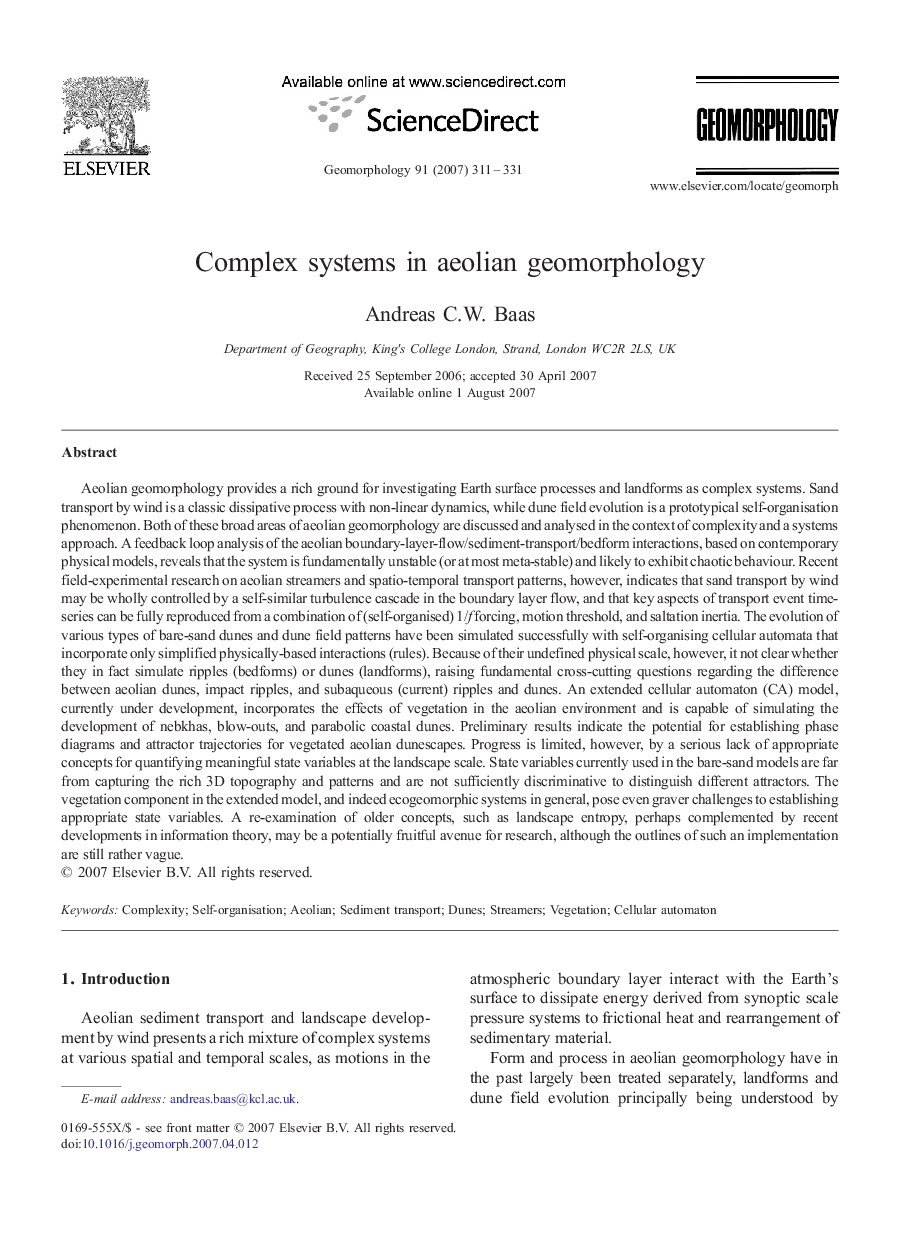| Article ID | Journal | Published Year | Pages | File Type |
|---|---|---|---|---|
| 4687121 | Geomorphology | 2007 | 21 Pages |
Aeolian geomorphology provides a rich ground for investigating Earth surface processes and landforms as complex systems. Sand transport by wind is a classic dissipative process with non-linear dynamics, while dune field evolution is a prototypical self-organisation phenomenon. Both of these broad areas of aeolian geomorphology are discussed and analysed in the context of complexity and a systems approach. A feedback loop analysis of the aeolian boundary-layer-flow/sediment-transport/bedform interactions, based on contemporary physical models, reveals that the system is fundamentally unstable (or at most meta-stable) and likely to exhibit chaotic behaviour. Recent field-experimental research on aeolian streamers and spatio-temporal transport patterns, however, indicates that sand transport by wind may be wholly controlled by a self-similar turbulence cascade in the boundary layer flow, and that key aspects of transport event time-series can be fully reproduced from a combination of (self-organised) 1/f forcing, motion threshold, and saltation inertia. The evolution of various types of bare-sand dunes and dune field patterns have been simulated successfully with self-organising cellular automata that incorporate only simplified physically-based interactions (rules). Because of their undefined physical scale, however, it not clear whether they in fact simulate ripples (bedforms) or dunes (landforms), raising fundamental cross-cutting questions regarding the difference between aeolian dunes, impact ripples, and subaqueous (current) ripples and dunes. An extended cellular automaton (CA) model, currently under development, incorporates the effects of vegetation in the aeolian environment and is capable of simulating the development of nebkhas, blow-outs, and parabolic coastal dunes. Preliminary results indicate the potential for establishing phase diagrams and attractor trajectories for vegetated aeolian dunescapes. Progress is limited, however, by a serious lack of appropriate concepts for quantifying meaningful state variables at the landscape scale. State variables currently used in the bare-sand models are far from capturing the rich 3D topography and patterns and are not sufficiently discriminative to distinguish different attractors. The vegetation component in the extended model, and indeed ecogeomorphic systems in general, pose even graver challenges to establishing appropriate state variables. A re-examination of older concepts, such as landscape entropy, perhaps complemented by recent developments in information theory, may be a potentially fruitful avenue for research, although the outlines of such an implementation are still rather vague.
